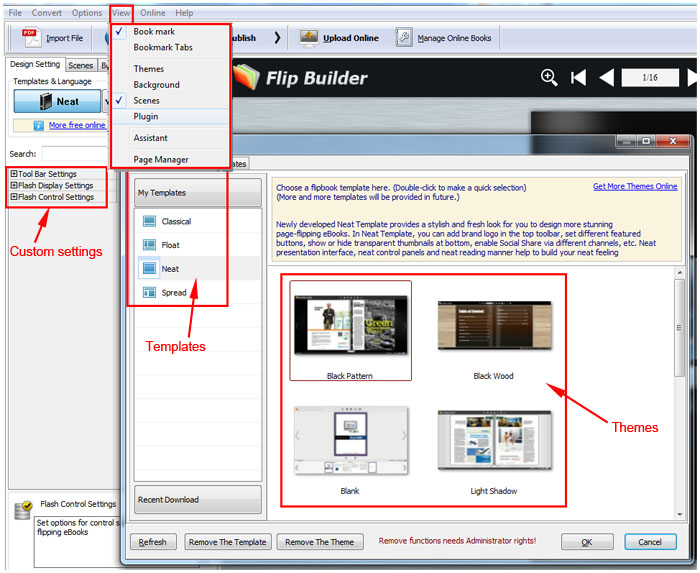
So open File > Properties (Command/Ctrl-D) and, in the Initial View tab, set the Page Layout to “Two-Up (Cover Page).” Make sure the Show Cover Page During Two-Up is selected, too, or else page 1 will become the left-hand part of a two-page spread.īut you don’t want to have to tell your client to do this.
#MAKE MY PDF FLIP PAGES PDF#
Of course, you’d also need to draw your own line in the document to show where the spine is… Blech.Īfter opening the PDF in Acrobat, you can adjust the view (View > Page Display) to show the spreads. But second, all you’re really doing is telling InDesign to pretend that the whole spread is a single page - and that the document is made up of single-sided pages.

It is tempting to turn on the Spreads checkbox (in the Export PDF dialog box) in order to show what the book will look like, but I encourage you not to.įirst of all, as you found out, InDesign cannot merge the two pages (last page of one chapter and the first page of the next) together into a single spread. Making a PDF of a book actually look like a book isn’t as straightforward as you might hope. (This is not for final print, but only to show clients what their pages look like.) If I want to make a pdf, the spread option does not work for the last page from one document and the first page from the next document. With book documents, chapters usually start on a right page.

New information below also includes links to other Creative Pro posts about this feature. Editor’s note: Since this post was first published in 2009, Adobe has added the Publish Online feature to InDesign, which could be an improvement on this client proof workflow for some designers.


 0 kommentar(er)
0 kommentar(er)
